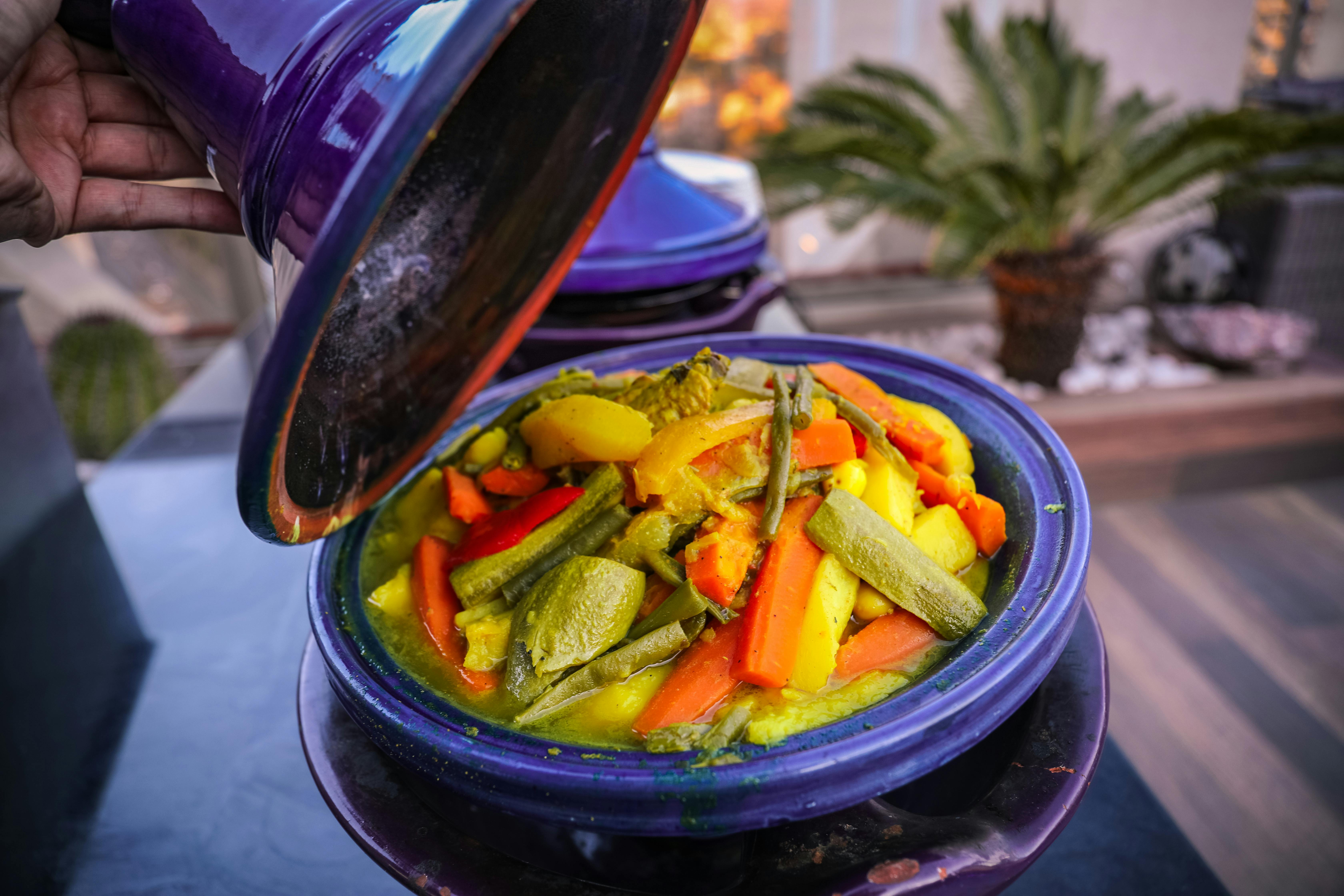Unveiling the Splendors of Moroccan Cuisine: A Journey of Exotic Flavors
If you're a foodie looking to explore a new cuisine, why not embark on a culinary journey through Morocco? Known for its vibrant spices, hearty stews, and sweet pastries, Moroccan cuisine is a fascinating mix of Berber, Arab, French, and Mediterranean influences.

The Colorful Palette of Moroccan Spices
Moroccan cuisine is renowned for its use of an array of spices which infuse dishes with unique, robust flavors. The most common spices include cumin, coriander, saffron, chilies, dried ginger, cinnamon, and paprika. Ras el hanout, a complex blend of over a dozen spices, is considered the signature spice of Moroccan cuisine. These spices not only add flavor, but also offer numerous health benefits.
Famous Moroccan Dishes
When it comes to Moroccan cuisine, the tagine is a must-try. Named after the earthenware pot it’s cooked in, tagine is a slow-cooked stew brimming with succulent meat and vegetables, flavored with aromatic spices. Another popular dish is couscous, typically served with a meat or vegetable stew. Don’t forget to try pastilla, a sweet-savory pastry filled with meat, usually pigeon, mixed with almonds, cinnamon, and sugar.
The Art of Moroccan Bread Making
Bread, locally known as Khobz, is a staple in Moroccan cuisine and is served with almost every meal. Khobz is traditionally baked in a wood-fired oven and comes in various shapes and sizes. Other types of Moroccan bread include msemen, a flaky, pancake-like bread, and baghrir, known as the ‘hundred hole pancake’, often served with honey and butter.
Moroccan Beverages and Desserts
Mint tea, also known as Moroccan whiskey, is the drink of choice in Morocco. This sweet, minty tea is typically served in a small glass with a generous amount of sugar. When it comes to desserts, Moroccans love their pastries. Most Moroccan pastries are made with a unique dough called warqa and are filled with almond paste, flavored with orange flower water, and topped with honey and sesame seeds.
Cultural Etiquettes and Dining Traditions
Here are some interesting aspects of Moroccan dining culture:
- Meals are often communal and eaten with the right hand.
- Bread is used as a utensil to scoop up food.
- It’s polite to leave a little food on your plate to signify that you’re full.
Embrace the Moroccan Culinary Adventure
The vibrant flavors, enticing aromas, and rich traditions of Moroccan cuisine make it a fascinating culinary journey. Each dish tells a story of the country’s history and cultural influences. So, why not spice up your next meal with some Moroccan flair? After all, it’s not just about eating, but experiencing a cuisine.




